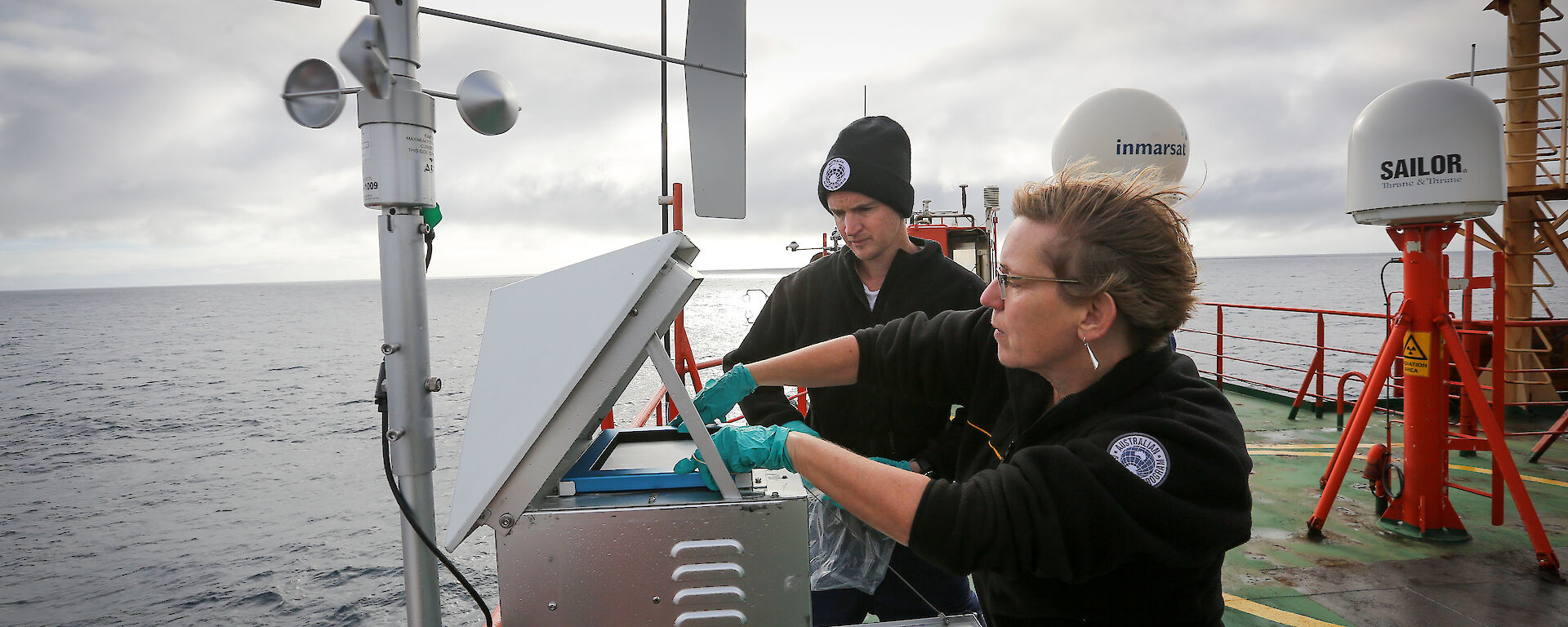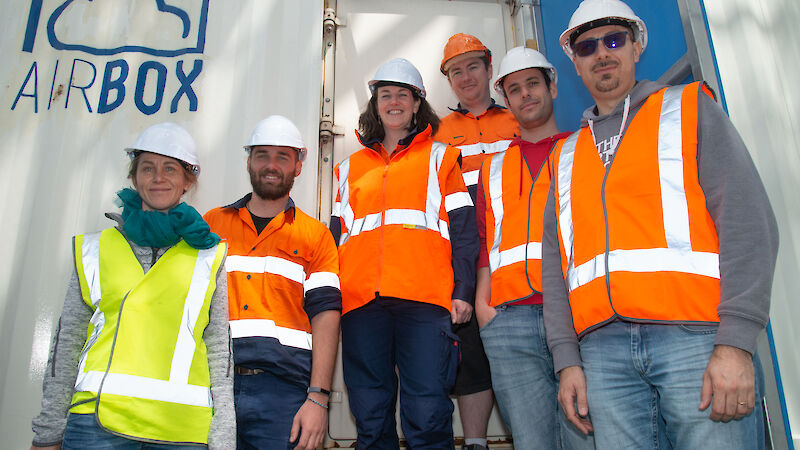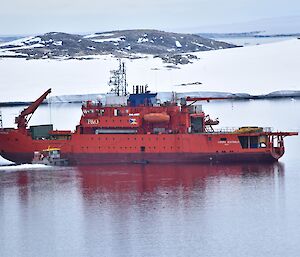The custom-built containerised laboratory housed nine dedicated instruments, with at least eight other instruments added by project collaborators.
Project Leader Dr Robyn Schofield, of the University of Melbourne, said one of the main goals of the project* was to understand where the aerosols that influence cloud formation come from, how many there are, how reflective they are, and how big they are.
“Aerosols are important in cloud formation over the Southern Ocean and affect the amount of solar radiation reaching and heating the Earth’s surface,” Dr Schofield said.
In the relatively unpolluted air above the Southern Ocean, the major source of aerosols is sea salt, from wind shearing the tops off waves. However, there are also chemical processes in the ocean and in the sea ice that influence aerosol concentrations.
“To help interpret our measurements we will use atmospheric modelling to disentangle the roles of these local chemical processes and transport,” Dr Schofield said.
“This is an innovative approach that has not been used before in this region of the world and will hopefully help us resolve some issues that climate models have over this region — including the contribution of Southern Ocean clouds in regulating Earth’s temperature.”
Instruments in the AIRBOX (Atmospheric Integrated Research Facility for Boundaries and Oxidative Experiments) included:
- a lidar that emits a micro-pulsed green laser to measure aerosol and cloud profiles up to 10 kilometres;
- an ozone monitor;
- a trace gas analyser to measure greenhouse gases such as carbon dioxide, nitrous oxide and methane;
- a spectrometer measuring ultraviolet and visible light to see reactive trace-gases, including bromine monoxide, nitrogen dioxide and ozone; providing information on how chemically reactive the atmosphere is;
- sonic anemometers to measure energy and moisture fluxes; and
- cameras to record the sea state and cloudiness of the atmosphere.
In addition, a range of instruments measured aerosol properties, including optical properties, how readily they form clouds, their concentrations and sizes, and their chemical make-up.
Dr Schofield said the four teams that rotated through the four voyages were happy with how the AIRBOX performed, with the instruments running well most of the time, despite some challenges.
“The big seas and ice-breaking weren’t kind on our instruments but they stood up to the rolling and battering fairly well,” she said.
“We have a lot of data coming in now, so managing that is going to be the next challenge.”
Also involved in the AIRBOX project are the Australian Antarctic Division, University of Tasmania, University of Melbourne, Queensland University of Technology, Macquarie University, University of Wollongong, CSIRO, Monash University and the Australian Nuclear Science and Technology Organisation (ANSTO).
Wendy Pyper
Australian Antarctic Division
*Australian Antarctic Science Project 4431




